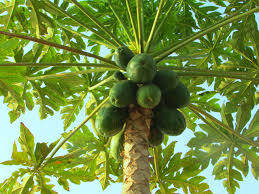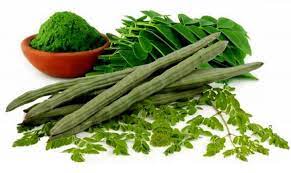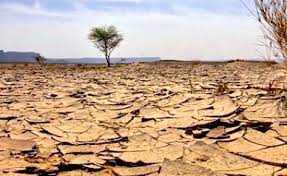
Soya bean is one of the most common food crops grown and consumed in many parts of Africa. Soy bean (Glycine Max) is classified as an oilseed rather than a pulse. It is a species of legume native to East Asia (China) and still remains a major crop there till today. Prior to its use for fermented food products, soybean was considered sacred for use in crop rotation as a method of fixing nitrogen.
The bean on dry weight basis is twenty-nine percent (29%) oil, forty percent (40%) protein, thirty-five percent (35%) carbohydrate and about five percent (5%) ash. Its protein is heat stable, thus allowing it to withstand high temperature during cooking.
Though production and utilization of soy bean started in the Orient as far back as the 11th Century, this ancient crop became grown in other parts of the world just in the 20th Century. It was first introduced in Europe in the 1700s and in America in 1804 (Katz, 1998).
It was introduced to Africa from China in the late 19th Century and is now widespread across the continent including Nigeria. The earliest known cultivation of soy beans in Africa was in 1896, when they were grown in Algeria, at a government botanical station and later in 1903, when they were grown in South Africa.
From 1908, there has being a dramatic and tremendous increasing interest in growing Soybean in Africa, as Europe for the first time began import large quantities of Soybean in response to severe shortages and prices of oil.
By 1982, Soybean and Soy foods, though still played a very minor role in Africa have been identified as having great potentials in arresting the declining per capital food production as well as protein and calorie consumption in the Continent including Nigeria.
Soy bean was introduced into Nigeria in 1908; it was first planted in Ibadan, Oyo State.
Initially the crop was cultivated for export with the support and encouragement of Groundnut Board. Nigeria presently produces about five hundred thousand (500,000) MT of Soybean annually making it one of the largest producer’s of the product on the African continent. Soybean is a legume which is produced in most the middle belt of the country with Benue state accounting for about forty percent (45%) of the total production in country.
Soya Bean is a leguminous crop whose importance and economic benefits cannot be over emphasized. Products that can be gotten from Soya Bean include Soy Cake, Soy oil, Full Fat Soya, Soy meal, soy meal, soy flour, soy milk, tofu, textured vegetable protein amongst other things.
In order to grow a healthy crop of soya bean you will need to combine plant production and plant protection practices. These include site selection, soil improvement, variety and planting material selection, and planting and post-planting measures against weeds, pests and diseases.
Some of the issues are discussed below
Varieties
There are numerous varieties of soya bean ideal for different climates and vegetation belt but the most common varieties are TGX 1448-2E, TGX 1485-ID and TGX 1835-10E.
Before sowing, the seeds should be treated with captan (at the rate of one (1) sachet per eight (8) kilogrammes of seeds) before planting for protection against soil-borne fungal diseases.) to keep them safe from soil borne diseases.
Soybean seeds easily lose their viability. It is common for soybean, even when stored properly, not to germinate after twelve to fifteen (12 –15) months in storage. Therefore, use seeds that are not more than twelve (12) months old to ensure good germination.
Sort out the good seeds for planting to ensure that they are free from insects, disease infestation, and weed seeds. Do not purchase seeds from the open market as the germination potential is not guaranteed.
Planting
Sow soybean by hand, planter, or by drilling. Plant three to four (3 to 4) seeds/hole at a spacing of seventy-five (75) cm between rows and ten (10) cm between stands. Alternatively, drill seeds at fifty to seventy-five (50–75) cm between rows and five (5) cm within rows.
For the early maturing varieties, a spacing of fifty (50) cm between rows and five to ten (5–10) cm within rows is recommended because they respond better to narrow spacing than the late-maturing varieties.
Do not sow seeds more than two to five (2–5) cm deep. Deeper planting may result in loss of vigor or failure of seedlings to emerge.
Soybean produces well over a wide range of planting dates, if moisture is available. The recommended dates for planting soybean in different ecological zones in Nigeria are: southern region could start planting by early June or early July while northern Nigeria starts in mid-June or early July.
Early planting as a result prolonged dry spell after planting may result in permanent wilting of the crop and the need for replanting. Late planting, on the other hand, may expose the crop to attack by some late season pests and also deprive the crop of sufficient moisture if the rains stop early.
About fifty t seventy (50–70) kilogrammes (20–28 standard mudus) are required to obtain a population of four hundred and forty-four thousand, four hundred and forty-four (444,444) plants/ha for soybean varieties.
Manures and Fertilizers
A good fertilizer recommendation for soybean production depends on a good soil test. Soybean improves soil fertility and fixes nitrogen in the soil.
Under normal conditions, soybean as a legume should provide itself with nitrogen through biological nitrogen fixation.
Weeding and Herbicides
The base of the soya bean should be kept clean by weeding. Alternatively, suitable weedicides can be sprayed around the base to control weeds.Both annual and perennial weeds attack soya bean farms necessitating farmers to carry out routine weeding.
Weeding can be done manually using hoes and other crude tools or can be achieved using chemicals (herbicides). Efficient weed control has a tendency of increasing the general output of the farm.
Climate and Irrigation
Nigeria has a very favorable climate that is ideal for soya bean to thrive. Most areas in the country receive well over seven hundred (700) mm of rainfall annually and that is the water requirement for the crop.
The crop can also be raised in areas that receive lesser amount of rainfall through irrigation agriculture which is a trend on the rise in the nation.
Harvesting and Yield
Soybean matures within three to four (3–4) months after planting and requires timely harvesting to check excessive yield losses. At maturity, the pod is straw-colored.
It is recommended that soybean be harvested when about eighty-five percent (85%) of the pods have turned brown for a non-shattering variety but eighty percent (80%) for shattering varieties.
Alternatively, the crop can be harvested when the seeds are at the hard-dough stage, when the seed moisture content is between fourteen to sixteen percent (14% - 16%).
Soil Type
It can be grown on a wide range of soils with pH ranging from four point five to eight point five (4.5 to 8.5). Soybean should not be planted in sandy, gravelly, or shallow soils to avoid drought stress.
It should not be grown in waterlogged soils or soils with surfaces that can crust, as this will lead to poor seedling emergence.
The market for soya beanand it’s bye- products are national. With a population of over two hundred million (200,000,000) people and an estimated national population growth rate of five point seven percent (5.7%) per annum, Nigeria has a large market for soya beanand it’s bye-products.
The estimated national demand for soya bean bye-products and their current supply level is given below
SOYBEAN USE QUANTITY PERCENTAGE
Crush + full fat soy 255,000 53
Industrial Food use 29,000 6
Direct human Consumption + seed + Residuals 200,000 41
Total 484,000 100
From the above figures, it is clear that there is a large, growing and sustainable market for soya bean and it’s bye – product hence soya bean in Nigeria.
Do you want more details about the subject matter?
You can order our detailed feasibility report on soya bean cultivation, processing and sales in Nigeria by clicking on the link below.
SOYA BEAN CULTIVATION, PROCESSING AND SALES IN NIGERIA; THE FEASIBILITY REPORT.
Anaekwe Everistus Nnamdi Ikechukwu is a business development consultant and the chief research officer of Foraminifera Market Research Limited.
Contact us with any of the details provided below to arrange a meeting
Office Phone Number: 01- 295 24 13 (Monday – Saturday; 8 am – 5 pm)
Mobile Number: +234 (0) 8033782777 (Monday – Saturday; 8 am – 6 pm)
E-Mail Address: foraminiferaltd@gmail.com
CC: foraminiferamarketresearch@yahoo.com
Office Address:
61-65 Egbe- Isolo Road,
Iyana Ejigbo Shopping Arcade,
Block C, Suit 39,
Iyana Ejigbo Bus Stop,
Ejigbo, Lagos.























